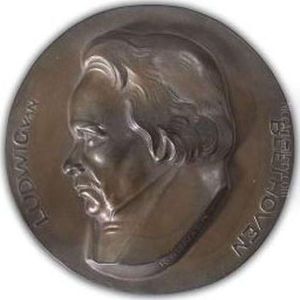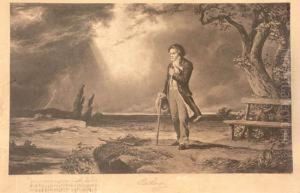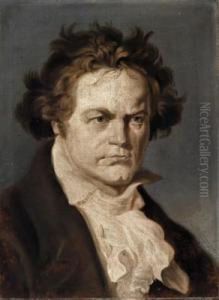Ludwig Van Beethoven Paintings
Ludwig van Beethoven was a German composer and pianist, a key figure in the transition between the Classical and Romantic eras in Western art music. He remains one of the most famous and influential composers of all time. Born on December 16, 1770, in Bonn, then the capital of the Electorate of Cologne and a part of the Holy Roman Empire, Beethoven displayed his musical talents at an early age. He was taught initially by his father, Johann van Beethoven, who was a singer and instrumentalist in the service of the Elector of Cologne. His father's harsh instruction and attempts to showcase him as a child prodigy like Mozart did not produce the desired results, prompting the intervention of others who recognized his abilities.
Beethoven's musical education was not formal or extensive. He studied briefly with Christian Gottlob Neefe, who introduced him to the works of Bach and Mozart. His most significant early patron was the Elector of Cologne, Maximilian Franz, who subsidized Beethoven's move to Vienna in 1792. In Vienna, Beethoven studied with several influential composers, including Joseph Haydn, Johann Georg Albrechtsberger, and Antonio Salieri. He rapidly established a reputation as a virtuoso pianist and was soon mingling with the Viennese aristocracy, who became some of his most important patrons.
Around 1800, Beethoven began to lose his hearing, a calamity that led him to contemplate suicide, as documented in the famous Heiligenstadt Testament. Nevertheless, he continued to compose, and his work increasingly reflected his struggles and his philosophical engagement with the meaning of life and art. His middle period, sometimes referred to as the 'Heroic' phase, includes such masterpieces as the 'Eroica' Symphony (Symphony No. 3), the 'Fate' Symphony (Symphony No. 5), and the 'Pastoral' Symphony (Symphony No. 6), as well as his only opera, 'Fidelio'. Beethoven's music during this time was characterized by dramatic contrasts, expanded forms, and the use of motivic development, which would influence countless composers who followed him.
Beethoven's late period began around 1815 and extended until his death. During this time, his compositions became more introspective and complex, pushing the boundaries of musical form and expression. Works from this period, like the 'Choral' Symphony (Symphony No. 9), which includes the famous 'Ode to Joy', the late string quartets, and the 'Missa Solemnis', are celebrated for their profound depth and originality. Beethoven's influence on subsequent generations of composers was profound, and his music continues to be performed regularly around the world.
Despite his debilitating deafness and increasing ill health, Beethoven remained musically productive until his death. He died on March 26, 1827, in Vienna, after a prolonged illness. His legacy is not merely that of a musical genius but also of an artist who, through his work, exemplified the human struggle against adversity, the triumph of personal vision, and the pursuit of artistic freedom. Beethoven's life and compositions have inspired countless musicians and listeners, and his works remain central to the repertoire of classical music.


